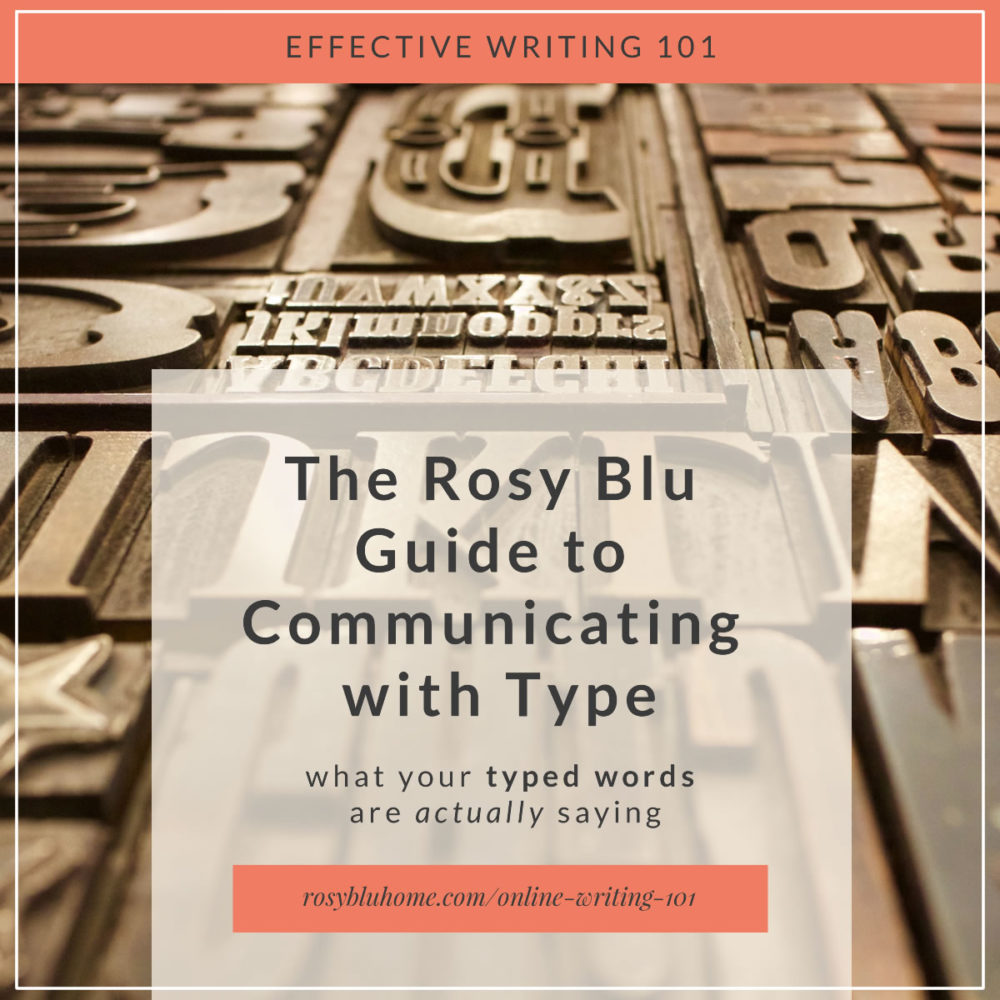A.K.A. what your typed words are actually saying
I’m a designer by trade. I design websites and I design systems and I design my whole life, actually, from the stretch break I’m taking at 3 o’clock this afternoon right down to the lavender essential oil that will kiss my forehead before I go to sleep tonight.
A thing I’ve realized is that we all spend a lot of time online. (LOL understatement!). A lot of that time is spent reading words. Professional words on websites and blogs, and also personal words, like in emails and notes to ourselves and notes to our honeys sent via text on a cellyphone.
I had a fascinating phone conversation with Abby Kerr about Voice Values (there’s a self assessment here!) and she pointed out that one of my skills is that I’m an empathetic writer, by nature, and one of the signs of an empathetic writer is using italics a lot. Guilty as charged.
I thought a lot about that afterwards. About why I use italics, and why other empaths might too, and what that means in writing and reading a post (or any other snippet of text, for that matter). And of course, my marketing mind translated this into a Learning Moment about why this skill might make me good at writing compared to (some) other people.
For those of you who communicate using your computers (so, basically, all of you), I’ve put together a handy little guide to help illustrate how different typographic tools, like italics and symbols and capitalization, affect what you are communicating to your reader.

The Rosy Blu guide to communicating with type
Italic says emphasis, look extra hard at this. Sometimes italics indicate words spoken or thought, which you can understand from the context, like in the paragraph below about CAPITALS.
Bold also says emphasis, but a little more boldly. I’m writing this in thick letters because you need to pay attention, got that smartypants?
*This is another kind of emphasis invented by the internet.* Text surrounded by asterisks. It’s actually a markup form of italic, in case you’re into that kind of nerdy thing. Not to be confused with actually putting an asterisk right after a word* which indicates to look at the bottom of the page for more info.
(Parentheses are similar to asterisks*, in that they share an idea that’s a tangent to the main text, but parentheses indicate this content still really needs to be seen. It might mean “sometimes but not always” or it might mean “I’m taking a break from the current idea, so don’t get confused, and go back to the first idea when you are done.” I once heard some wise advice which was to treat parenthesis like air conditioning. Use sparingly, because who wants to spend all their energy cooling the entire house when you can just cool one room? Who has that kind of money, anyway?)
ALL CAPITALS GRAB YOU IN THE FACE, HANDS ON CHEEKS, EYEBALL TO EYEBALL AND SAY LOOK AT THIS RIGHT HERE DO YOU SEE IT? YOU HAVE TO LOOK BECAUSE I’M BASICALLY YELLING AT YOU.
All caps are only okay in extremely careful, intentional doses. An entire paragraph should never be in all caps unless you are:
a) an old person who doesn’t know how to use the Shift key (in which case, hopefully your recipient thinks you’re senile enough to consider an all-caps communication adorable instead of annoying) or
b) are using them in small quantities for a headline, or for design emphasis, or you have a really good reason.
lowercase, even for beginnings of sentences, says I’m casual. look how casual I am. or maybe I’m lazy? you’re not even sure, are you? but notice I still capitalize words like I. good god, we’re not barbarians. that means I’m intentionally casual but breaking the rules on purpose, because I’m that smooth.
#hashtag says this is a thing a bunch of people are already talking about. (It started on social media, but people use it in other contexts now.) Like, I’m totally talking about a trendy thing here! It can sound a little bit hipster and/or valley girl. Or it can sound ironic. Or it might sound ironically ironic, which is somewhat ironic because hipsters ::eyeroll:: #portlandia
these dots ::points at dots:: indicate that the writer is doing something to accompany the text. For example, ::swooning:: or ::holds up flashing sign that reads UNDERSTATEMENT::
There’s also //these, which are a slightly different version of// (this) or ::this::, depending on your personal writing style, all of which are chosen for aesthetics and the kind of voice you’re going for, intentionally or not…(this) is more professional/buttoned up and traditional than the //trendier, more casual and conversational alternatives//.
I hope you enjoyed my guide to communicating with type! I’d love to hear your additions in the comments. Bonus points for demonstrating your point with a message about cats and/or hipsters.
* Asterisks say: there’s an extra thing to say here, but I don’t want to interrupt the idea to share it. For those of you interested enough to know what it is, you’ll either stop reading and check what it says immediately, or you’ll keep reading and see it when you get to the end of the page, and if it’s interesting you’ll be glad you read it. Or, you’ll just ignore the asterisk and the corresponding extra thing to say because you are in a hurry and/or really don’t give a shit. Which is fine. That’s why it’s an asterisk and not in the article/story/book.